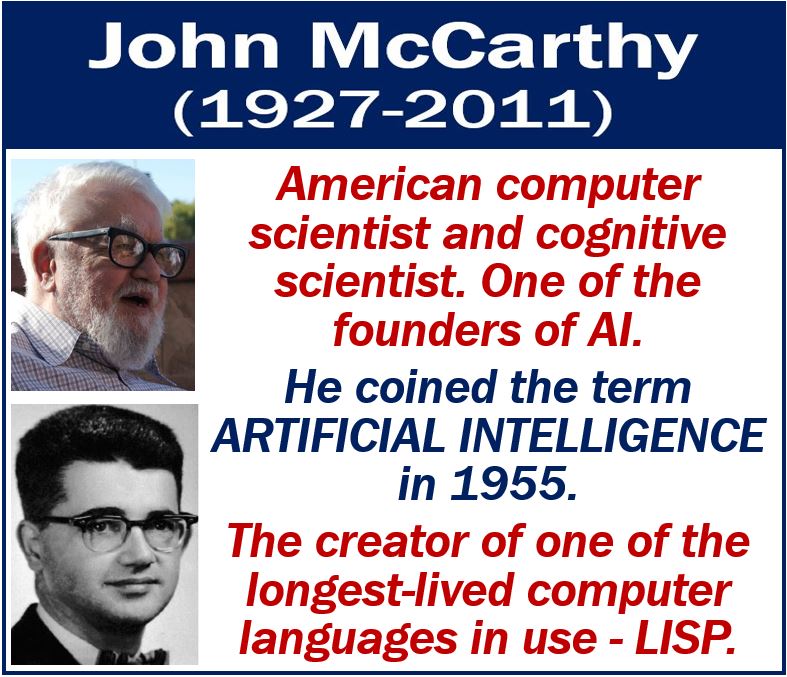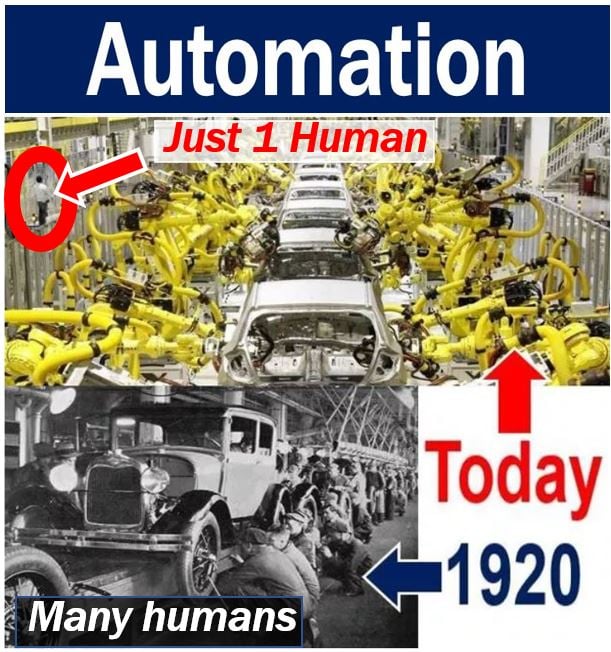Artificial Intelligence or AI refers to software technologies that make a robot or computer act and think like a human. Some software engineers say that it is only artificial intelligence if it performs as well or better than a human. In this context, when we talk about performance, we mean human computational accuracy, speed, and capacity.
Artificial intelligence is a theory and development of computer systems that can perform tasks that normally require human intelligence. Speech recognition, decision-making, visual perception, for example, are features of human intelligence that artificial intelligence may possess. Translation between languages is another feature.
Humans can ‘learn as we go along.’ In other words, learn from experience. Machines with AI can also do that. We call it machine learning. A neural network is an example of machine learning.
Expanding beyond neural networks, AI technologies are also exploring the realms of deep learning and reinforcement learning, which enable machines to process information and make decisions in even more complex and nuanced ways, closely mimicking human thought processes.
Artificial intelligence contrasts with natural intelligence. Humans and other animals display natural intelligence.

Artificial intelligence – John McCarthy
John McCarthy (1927-2011), an American computer scientist and cognitive scientist, coined the term ‘artificial intelligence.’ In fact, he was one of the founders of the discipline of AI.
McCarthy received the Turing Award for his contributions to the topic of artificial intelligence. He also received the Kyoto Prize and the United States National Medal of Science.
In a 1979 article titled ‘Ascribing Mental Qualities to Machines,’ McCarthy wrote:
“Machines as simple as thermostats can be said to have beliefs, and having beliefs seems to be a characteristic of most machines capable of problem-solving performance.”

Artificial intelligence – its environment
Typical AIs perceive their environment and take actions that improve their chances of achieving their goals successfully.
An artificial intelligence’s objective may be a simple one. Its goal, for example, may be to win at tic-tac-toe (UK: noughts and crosses).
On the other hand, its goal may be complex. An AI, for example, may perform actions mathematically similar to actions that got it rewards in the past.

Artificial intelligence – automation
Automation is the use of computer-controlled devices to assume control of processes. Business leaders like automation because it boosts efficiency, productivity, and reliability.
Unemployment
For society, however, there are concerns. In most cases, automation replaces labor. In other words, when you have robots entering the workplace, people lose jobs.
Many economists and sociologists today fear that artificial intelligence will eventually take over most jobs. In other words, AI will push up unemployment rates dramatically.
For robots and other electronic devices to take over tasks that humans do, they must have artificial intelligence.
AI creeping into every aspect of everyday life
In most advanced economies and many emerging economies, artificial intelligence is entering the workplace in a big way. In fact, not only is AI becoming more common in the workplace, but also in the home, and even outdoors.
Apart from economists and sociologists, some eminent scientists also worry about artificial intelligence. When Prof. Stephen Hawking was alive, he worried about AI a lot. He wondered, for example, what would happen to humans when AI became more sophisticated and smarter than us.
Regarding AI in the future, Prof. Hawking said:
“It would take off on its own, and re-design itself at an ever-increasing rate. Humans, who are limited by slow biological evolution, couldn’t compete, and would be superseded.”
Artificial intelligence – business
Artificial intelligence has now become a major factor in business competitiveness, said Tata Consultancy Services. The firm carried out a study involving 835 executives who worked in thirteen global industry sectors across the world.
Eighty-four percent of the executives said they considered the use of artificial intelligence to be ‘essential.’ Specifically, essential for competitiveness. Half of the respondents said they saw AI as ‘transformative.’
Ananth Krishnan, Chief Technology Officer of Tata Consulting, said:
“As companies begin to gain a better understanding of AI’s application for business, they will realize the significant impact of this transformative force. This is reflected in our Global Trend Study, which shows that forward-thinking companies are beginning to make major AI investments.”

Self-driving vehicles
Rapid advancements in AI have contributed to the growth of the automotive industry. Specifically, through the creation and continued development of self-driving cars.
In 2016, there were more than thirty companies testing self-driving cars using artificial intelligence. Apple, Google, and Tesla, for example, have been using AI for several years.
The artificial intelligence in self-driving vehicles learns how to brake safely, change lanes, and prevent collisions. It also learns how to navigate and use maps.
This pilot program represents a pioneering step towards integrating autonomous vehicles into urban transport systems, offering insights into future mobility solutions and their impact on city planning and congestion management.
At the end of 2018, engineers will be testing partially self-driving trucks in the UK. The UK Department for Transport (DfT) and Highways England commissioned Transport Research Laboratory (TRL) to carry out the tests.
The trucks will be traveling in a convoy. The lead vehicle, which will have a human driving it, will control braking and acceleration of the other two trucks. The trucks will communicate wirelessly with each other.
Medicine
People are currently using AI in several different fields. For example, in medicine, an MIT team has created an AI model for brain cancer treatment regimens.
The model formulates less toxic regimens that still manage to reduce tumor size.
In many cases, treatment frequency changed from monthly to once or twice a year. Some dosages were 50% smaller.
This approach has the potential to significantly improve patient quality of life by minimizing the side effects associated with more frequent and higher dosages of medication.
